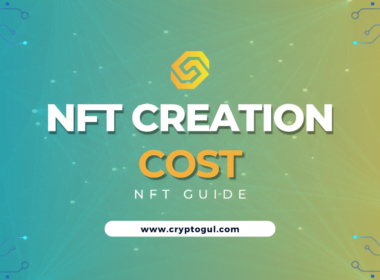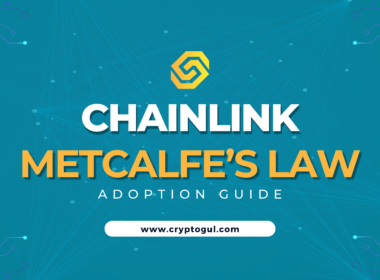In the world of technology, change is constant, and the evolution of the internet is not an exception.
Throughout recent years, the emergence of Web3 technology has brought about significant changes to the way we use the internet, and Web3 browsers are at the forefront of this change.
Within this article, we’ll cover everything you need to know about Web3 browsers, including their definition, how they work, and their benefits.
Introduction
The internet has come a long way since its inception, from Web1 to Web2, and now to Web3. Web3 technology is the next step in the evolution of the internet, with a focus on decentralization, privacy, and user control. And at the center of Web3 technology are Web3 browsers.
What is a Web3 browser?
A Web3 browser is a web browser that is specifically designed to work with Web3 technology. Unlike traditional web browsers that are designed to work with Web2 technology, Web3 browsers are decentralized and offer users more control over their data.
How does a Web3 browser work?
A Web3 browser uses decentralized technology to enable users to access decentralized applications (DApps) and interact with decentralized networks. It does this by using the Ethereum Virtual Machine (EVM) to run DApps and the InterPlanetary File System (IPFS) to store and retrieve data.
Benefits of using a Web3 browser
a. Decentralization
One of the most significant benefits of using a Web3 browser is decentralization. Web3 browsers are designed to work with decentralized networks, which means that data is not controlled by a central authority, but rather by a network of users.
b. Privacy and security
Web3 browsers offer users a higher level of privacy and security compared to traditional web browsers. Since data is stored on a decentralized network, it is much harder for hackers to access and manipulate user data.
c. User control
Web3 browsers give users more control over their data compared to traditional web browsers. Users can choose which data they want to share and which data they want to keep private.
Web3 browser features
a. Wallet integration
Web3 browsers come with built-in wallet integration, which allows users to store and manage their cryptocurrencies.
b. Decentralized application (DApp) support
Web3 browsers support DApps, which are decentralized applications that run on a decentralized network.
c. IPFS support
Web3 browsers support IPFS, which is a decentralized file storage system that enables users to store and retrieve data without a central authority.
Popular Web3 browsers
a. MetaMask
MetaMask is a popular Web3 browser that allows users to interact with decentralized networks and access DApps. It has a built-in wallet that allows users to store and manage their cryptocurrencies. MetaMask also has a browser extension that can be installed on traditional web browsers.
b. Brave Browser
Brave Browser is another popular Web3 browser that offers users privacy and security features. It has a built-in ad-blocker, and users can earn cryptocurrencies by viewing ads.
c. Opera Browser
Opera Browser is a traditional web browser that has added support for Web3 technology. It has a built-in cryptocurrency wallet and supports DApps.
How to set up and use a Web3 browser
Setting up a Web3 browser is easy. Users can download the browser from the official website and install it on their device. Once installed, users can create a wallet and start interacting with DApps and decentralized networks.
Web3 browser vs. traditional browser
The main difference between a Web3 browser and a traditional browser is that Web3 browsers are designed to work with Web3 technology, while traditional browsers are designed to work with Web2 technology.
Web3 browsers offer users more control over their data, while traditional browsers rely on a central authority to store and manage data.
Challenges and limitations of Web3 browsers
Web3 technology is still in its early stages, and there are several challenges and limitations that need to be addressed. One of the biggest challenges is user adoption, as many users are still not familiar with Web3 technology.
Another challenge is scalability, as decentralized networks can become slow and inefficient as the number of users increases.
Future of Web3 browsers
The future of Web3 browsers is bright, as more users and businesses begin to adopt Web3 technology. The emergence of decentralized finance (DeFi) and non-fungible tokens (NFTs) has driven the demand for Web3 browsers, and this trend is likely to continue in the future.
Conclusion
Web3 browsers are the future of the internet, with a focus on decentralization, privacy, and user control. They offer users more control over their data and enable them to interact with decentralized networks and DApps. While there are still challenges and limitations that need to be addressed, the future of Web3 browsers looks promising.
A Web3 browser is a web browser that is specifically designed to work with Web3 technology.
A Web3 browser uses decentralized technology to enable users to access decentralized applications (DApps) and interact with decentralized networks.
The benefits of using a Web3 browser include decentralization, privacy and security, and user control.
Some popular Web3 browsers include MetaMask, Brave Browser, and Opera Browser.
The future of Web3 browsers looks promising, as more users and businesses begin to adopt Web3 technology. The emergence of decentralized finance (DeFi) and non-fungible tokens (NFTs) has driven the demand for Web3 browsers.








